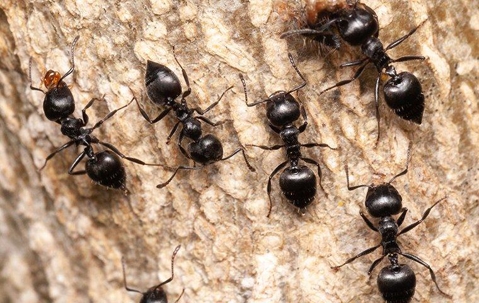Illinois residents know just how many ants we see in a year. Most of those ants are harmless, and most of them stay outside, but if there’s one obnoxious species likely to infest your home, it’s the acrobat ant.
If you live in Rock Island, IL, chances are you’ve already come across these pests. Let’s go over how to identify the acrobat ant, and what you can do to keep these aggressive insects out of your Illinois home.
What Do Acrobat Ants Look Like?
With so many different ant species in the Midwest alone, it can be difficult to distinguish between different types of pests. The acrobat ant is no different, but there are a few key factors that separate these ants from others.
Like most ants, the acrobat ant has 6 legs and a segmented body – in this case, a large head, a large abdomen, and a comparatively smaller midsection. Acrobat ants usually range between brown and black, though they are occasionally a lighter yellow-brown. Worker ants only grow to about ⅛ of an inch, though the queen can grow to three times this size.
Unlike other ants, acrobat ants have a heart-shaped abdomen when viewed from above, which is why they are sometimes called the Saint Valentine ant. Despite these physical characteristics, many people learn that they are dealing with the acrobat ant in a more unfortunate way. When threatened, acrobat ants can act aggressively, emitting a foul-smelling odor or becoming aggressive in large colonies. These pests are more commonly known as cocktail ants or acrobat ants because, when threatened, they lift their abdomens in a peculiar and combative way.
Why Acrobat Ants Cause Problems
When acrobat ant colonies are large enough, the colony members are more likely to defend their territory and become aggressive at any sign of intrusion. One way these ants fight back is to emit a foul-smelling odor. If that doesn’t work, the ants will bite, and although their bites don’t threaten your health, they can cause mild itching and discomfort around the skin.
Aside from this discomfort, acrobat ants occasionally cause home damage. Some exterminators have reported instances of acrobats causing electrical short-circuiting. However, home damage is quite rare for acrobat ants: their main danger lies in their bites, and in the large swarms that happen when the problem is left untreated.
Acrobat Ant Prevention Tips
Since ants are so tiny and great at hiding, it’s easy for a colony to go unnoticed until it’s large and aggressive. The best way to prevent this from happening is to keep acrobat ants out entirely. Here are a few prevention tips:
Minor landscaping: trimming trees and shrubs ensures that colonies don’t have ample space to nest and feed, making your lawn – and therefore, your property – less attractive.
Drain the house: standing water and leaky pipes are a great way to attract all sorts of pests, including acrobat ants. Be sure that your pipes aren’t leaking and that water drains away from your house, otherwise who knows what your house could attract.
Seal the castle: if there’s a crack in the house, an ant will find it. Be sure that your house is properly sealed, which includes window caulking, door frames, vents, chimneys, crawlspaces, and even roof shingles.
Of course, even the best prevention plan doesn’t always work with pests this small. If you have an acrobat ant infestation on your hands, don’t deal with these aggressive critters on your own. Reach out to the ant experts at Quik-Kill Pest Solutions, and secure your Iowa or Illinois home today.

